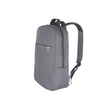How to Protect your Sensitive Data: A Guide for the Financial Sector
Safetica helps you protect your sensitive data, and be aligned with regulations, such as PCI DSS and GDPR.
Cyber Security @ KairaTrusted by:





Data Discovery and Data Classification
Know what sensitive data you have, where it is, and how it’s used and take appropriate measures to keep it safe and secure.
Software EnquiryTrusted by:





233 days
on average it takes to detect and contain a data breach in financial services businesses.

$5.85 million
is the average cost of a financial services data breach.

11 million files
is the average number of files that financial services employee has access to.

What are the types of data that financial institutions need to protect?
- Cardholder data
- Payment transaction data
- Customer account number
- Credit card number
- Purchase history
- Credentials
- and more
Why Safetica

Easiest to Implement and Integrate
Safetica enables easy and swift deployment, seamlessly integrating into existing IT infrastructure to minimize compatibility issues. Enjoy enhanced data protection and productivity without significant delays or disruptions.

Persistent Data Protection
Safetica’s persistent data classifications resist attempts to bypass DLP, even when files are archived, encrypted, or have a different extension. This protection extends to new documents and files leaving the protected endpoint.

Flexible Deployment Options
Safetica offers flexible deployment options to businesses, with on-premise installation for maximum control and security, or cloud-based hosting for greater flexibility and scalability




